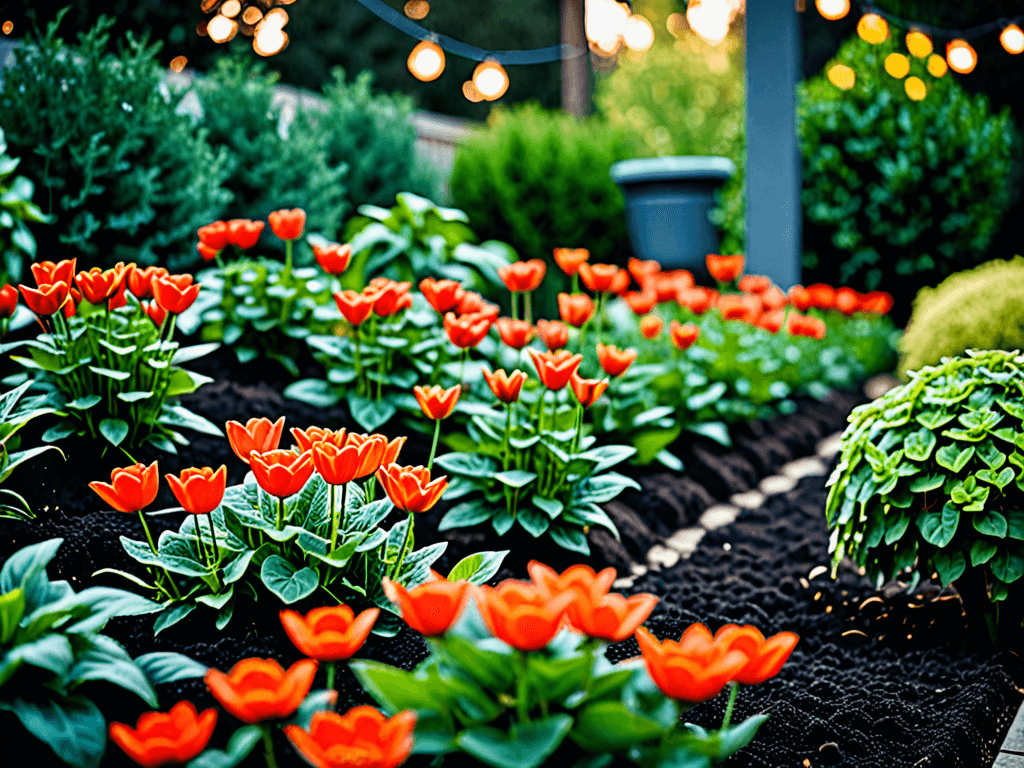Here is a guide on sustainable gardening tips to help you transform your garden into an eco-friendly haven. These tips aim to create flourishing gardens that sustain local wildlife and ecosystems while being mindful of resource use. Whether you’re starting anew or revamping your existing garden, these strategies will guide you toward a more sustainable gardening practice.
Understanding Sustainable Gardening
Sustainable gardening is the practice of growing plants in a way that is environmentally responsible and conserves resources. It focuses on maintaining natural ecosystems and promoting biodiversity.
By understanding the principles of sustainable gardening, you can help reduce the carbon footprint of your garden. This approach involves using organic gardening techniques that are beneficial to both plants and wildlife.
Embrace these practices to create a lush and thriving garden that supports local flora and fauna.
Benefits of Eco-Friendly Practices
Eco-friendly gardening practices can greatly benefit both the environment and your garden’s health. By using sustainable methods, you help reduce waste and conserve water, creating a more efficient and productive garden.
These practices support local wildlife by providing habitats and food sources, enhancing biodiversity. Implementing composting enriches soil naturally, reducing the need for chemical fertilizers.
By choosing native plants, you ensure that your garden is better adapted to local climate conditions, reducing maintenance efforts and water usage.
Overall, these techniques not only make your garden more sustainable but also more resilient and vibrant.
Choosing the Right Plants
Selecting the right plants is crucial for a sustainable garden. Opt for native species, as they are adapted to the local climate and soil conditions, requiring less water and maintenance. These plants also support local wildlife, providing food and habitats for birds and insects.
Consider drought-resistant varieties to conserve water and reduce irrigation needs. By choosing plants that thrive in your environment, you create a low-maintenance, eco-friendly garden that flourishes naturally.
Water Conservation Techniques
Saving water is important for sustainable gardening. Use drip irrigation systems to deliver water directly to plant roots, minimizing evaporation and waste.
Collect rainwater in barrels to use during dry periods, reducing dependence on tap water.
Implement mulching by covering soil with organic materials like straw or wood chips to retain moisture and suppress weeds.
Choose watering times carefully, ideally in the early morning or late evening, to reduce evaporation.
Soil Health and Composting
Healthy soil is the foundation of a thriving garden. Enhance soil quality by incorporating organic matter like compost, which enriches the soil with essential nutrients and improves its structure.
Composting involves recycling kitchen scraps and yard waste into nutrient-rich material that can be mixed into the soil. This process helps retain moisture, reduce the need for chemical fertilizers, and promote beneficial microorganisms.
Understanding your soil type and testing its pH levels can guide your amendments, ensuring optimal plant growth and health.
Natural Pest Control Methods
Natural pest control methods help manage garden pests without harming the environment. Use companion planting to deter insects by growing specific plants together, such as marigolds with tomatoes. Introduce beneficial insects like ladybugs and lacewings, which naturally prey on harmful pests. Employ traps and barriers to protect plants physically, and consider making homemade pest repellents using garlic or neem oil. These strategies reduce the need for chemical pesticides while keeping your garden healthy.
Seasonal Planting Strategies
Plan your garden according to the seasons to ensure optimal growth and resource use. Understanding seasonal cycles allows you to choose plants that thrive in specific weather conditions, which can lead to a healthier garden.
Spring is ideal for planting hardy vegetables like spinach and peas, while summer suits heat-loving plants such as tomatoes and peppers. In the fall, focus on planting root vegetables and winter greens that can withstand cooler temperatures.
Rotate crops each year to prevent soil depletion and minimize pests, fostering a sustainable gardening practice.
Community Gardening and Sharing
Community gardening fosters a sense of togetherness and environmental stewardship. By sharing resources such as tools, seeds, and knowledge, gardeners can work collaboratively, leading to a more vibrant and diverse garden space.
These shared gardens offer opportunities for people to learn from each other and exchange ideas about planting and sustainability.
Involvement in a community garden also encourages local biodiversity, as different participants may introduce a range of plants.
Shared gardening experiences can inspire creativity and innovation, making sustainable practices more accessible and engaging for everyone involved.
Sustainable gardening is a rewarding journey that benefits both the gardener and the planet. By adopting eco-friendly practices, such as choosing the right plants, employing water conservation techniques, and using natural pest control methods, you not only create a thriving garden but also contribute to the environment.
Community gardening and sharing resources expand this impact, bringing people together to learn and grow. Whether you are starting your garden or enhancing an existing one, the strategies outlined help ensure a sustainable and lush garden that aligns with nature’s cycles.
FAQ – Frequently Asked Questions About Sustainable Gardening
What are the benefits of sustainable gardening?
Sustainable gardening helps conserve resources, supports local biodiversity, and reduces environmental impact.
How can I start composting at home?
Begin by collecting kitchen scraps and yard waste, then layer them in a compost bin, turning it occasionally.
What plants are best for water conservation?
Choose drought-tolerant plants like succulents and native species that require minimal watering.
How can I naturally control pests in my garden?
Use companion planting, introduce beneficial insects, and create homemade pest repellents.
What is the importance of seasonal planting?
Planting according to the seasons ensures optimal growth and resource efficiency, and reduces plant stress.
How can community gardening benefit my local area?
Community gardening fosters collaboration, resource sharing, and enhances local biodiversity.
Why is native planting important?
Native plants are adapted to local conditions, requiring less maintenance and supporting local ecosystems.


